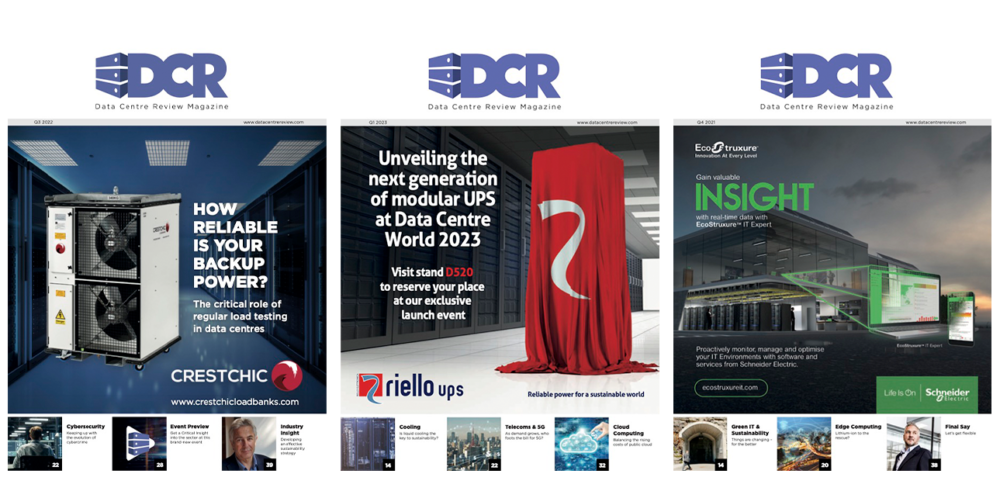Apurva Kadakia, Global Head – Cloud at Hexaware Technologies, argues that real value comes when organisations stitch private, public, hybrid and multi-cloud into one fabric – with FinOps and security built in.
While cloud adoption is nearly universal, many organisations are still only scratching the surface of its true potential. As a result, they are ignoring huge opportunities to add value to their business and address the evolving needs of their customers and employees. To maximise the impact of the cloud, organisations should stop thinking about it as an isolated solution, but as a continuum – spanning a mix of private, public, hybrid and multi-cloud environments.
By embracing this continuum, where diverse cloud infrastructures merge, organisations can run critical workloads in a more agile way, while maintaining consistency and scalability across their entire ecosystem. They can establish a technology foundation that fully supports their developing business needs and make smarter decisions about balancing cost, control and flexibility. This capability is becoming increasingly important due to enterprises’ accelerating adoption of AI, as they need to choose the right infrastructure to run the new workloads.
With AI models evolving rapidly and becoming more resource-intensive, access to a diverse range of cloud compute options has never been more critical. Those that are faster to adopt seamless cloud continuums will be best placed to manage adoption of AI and other new technologies, pioneer new business models, maintain a competitive advantage, and future-proof their operations.
Reaping the rewards of the cloud continuum
Research suggests global public cloud spend is projected to reach $723.4 billion in 2025, up 21.5% from 2024, with hybrid cloud adoption expected to reach 90% by 2027. To fully capitalise on these investments, organisations must understand the differences between each cloud environment. This is where the cloud continuum comes in – it enables organisations to seamlessly match technologies and services to the most suitable infrastructure, empowering them to innovate and reinvent their business strategies on a rolling basis.
A key advantage of the cloud continuum is the way it enhances resilience and data protection. This is because the architecture of the cloud continuum is distributed across multiple locations and platforms, which minimises data loss during unexpected disruptions and ensures services remain accessible – even in the event of system failures. Integrated data loss prevention and protection strategies in cloud setups add another layer of resilience by proactively identifying and mitigating risks such as unauthorised access or data leakage.
Adding to this, another significant draw of the cloud continuum is its hybrid versatility. The use of a range of services enables organisations to optimise their infrastructure – balancing the benefits of internal control with cloud-enabled scalability and agility. As a result, enterprises are equipped with the flexibility to rapidly tailor their infrastructure to meet evolving market shifts or unforeseen changes in operational needs.
Together, these capabilities help organisations not only safeguard critical data but also provide a robust foundation for uninterrupted operations in an increasingly volatile digital landscape.
Best practices for cloud continuum success
The benefits of the cloud continuum for enterprises are undisputed – it’s now a critical element of successful operations. However, recent forecasts indicate 25% of organisations will have experienced significant dissatisfaction with their cloud adoption by 2028, due to unrealistic expectations and poor implementation. To avert this risk and maximise the return on their investment, organisations need to take a more considered approach, by ensuring FinOps and security are baked into their cloud continuum.
FinOps practices will help to ensure cloud investments align directly with business objectives by fostering a culture of financial accountability and data-driven decision-making. This involves continuously optimising and evaluating cloud spend across public, private and hybrid models, monitoring the cost-effectiveness of emerging technologies like SaaS and AI, and empowering teams to make cost-conscious choices. With FinOps capabilities baked into the cloud continuum, companies can maximise value, avoid waste, and drive sustainable innovation at scale.
Equally essential is integrating security as a fundamental element of cloud adoption. Without this, all of an organisation’s investments risk being undermined by a catastrophic data breach or security failure that undermines trust and damages revenue.
To safeguard against this, organisations should adopt a security-first approach, embedding data encryption, identity and access management (IAM), and compliance controls directly into the cloud architecture from day one. As cloud ecosystems grow more complex, especially with AI and data-driven operations, real-time threat detection and automated response capabilities will also become critical.
Organisations should prioritise investing in advanced, proactive security controls, while cultivating a company-wide culture of vigilance through ongoing training and adherence to best practices. When security is considered a core enabler, not just an added bonus, organisations can innovate confidently and safely in the cloud.
Taking cloud to the next level
Moving to the cloud is nothing new – but enterprises must have a clear strategy to maximise the benefits of the full range of infrastructure and capabilities on offer to achieve the most success. Going forward, they will need to transition from traditional cloud offerings to modern infrastructures that support agile operations, in addition to cost savings. The surge in AI adoption has driven this higher up the agenda.
With all industries aiming to drive tangible ROI from the cloud, those that want to get ahead will need to take a more considered and flexible approach that’s built around their own unique requirements. By embracing the full continuum of cloud services, organisations can build a custom architecture that is perfectly attuned to the needs of their business both today and far into the future.


